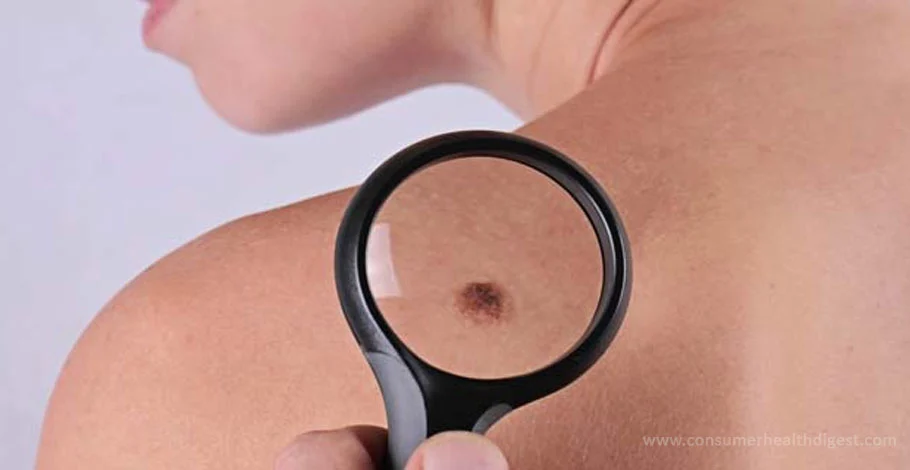In This Article
Overview
Have you noticed an unusual moles and suspect melanoma? Maybe it is just an atypical mole! Did you happen to notice an unusual moles or freckles on your body, became paranoid and spend a couple of hours on the Internet searching in fear, recognizing the symptoms of melanoma? That is actually a normal reaction.

We can become paranoid at some point, for as little as a mole, and convince ourselves that there are symptoms when there are none. Actually, it is a good thing that you check your body regularly, for any abnormalities, but instead of searching for symptoms on the Internet, try and contact your doctor to get a professional opinion on the matter. An atypical mole can easily be mistaken for melanoma. Find out why!
“Atypical mole” and “Dysplastic nevus” are terms that refer to an unusual mole which is commonly mistaken for melanoma.[1] That is because of the great resemblance that atypical moles and melano-ma have. An atypical mole, or Dysplastic nevus, is an unusual benign mole which it is a bit different from the other moles that we all normally have on our body.
Dysplastic moles differ from common moles by their size, color, surface and border.[2] Dysplastic refers to abnormal, and nevus refers to a mole, while nevi is the plural of nevus and refers to moles.
What are the Characteristics of Dysplastic Nevus?
- Size – Atypical moles usually have a bigger size than a normal mole. Atypical moles are usually more than 5 millimeters wide.
- Color – Atypical moles present a mixture of colors – from pink to brown.
- Surface – They usually have a smooth surface, slightly scaly, or in some cases, the surface can be pebbly.
- Borders – Unlike normal moles, who have clearly determined borders, Dysplastic nevus has irregular edges that may fade into the skin.
Where does usually a Dysplastic Nevus Appear?
Dysplastic nevi can be found anywhere on the body, but there are areas where these moles are more commonly found. These areas are usually exposed to the sun, e.g., the back. But dysplastic nevi can be found on areas such as the breasts and scalp, which are not usually exposed to the sun.
When do Dysplastic Nevi usually Appear?
Dysplastic nevi usually occur during puberty. However, it is not uncommon for atypi-cal moles to appear in adults.

Types of Moles
Can a Dysplastic Nevus Turn into Melanoma?
Although Dysplastic nevi can easily be mistaken for melanoma, you need to understand that Dys-plastic nevi are benign moles, whereas melanomas are maligned. Although there is a possibility for atypical moles to turn into melanomas, it is considered that most of them stay in the form in which they were when they first appeared.
However, studies show that people with more than 10 atypical moles have a greater risk of developing melanoma, than people who only have a few atypi-cal moles, or do not have any.[3]
When do you Need to Schedule an Appointment with Your Dermatologist?
When you notice a dysplastic nevus on your body, there is probably no reason to be concerned. But, you should definitely visit your dermatologist if you notice any changes in the atypical mole. Scheduled an appointment with your dermatologist if you notice a change in:
- Color – A change in the color of the atypical mole
- Size – A change in the size of the atypical mole – if the mole gets smaller or bigger
- Shape and/or texture – A change in the shape and/or texture of the atypical mole
- If the mole starts to itch
- If the mole starts to bleed
If you have a family history of melanoma or a large number of moles on your body, it is always a good idea to protect yourself from the sun by using a sun cream with a high protective factor before you expose yourself to the sun and learn the ABCDE’s of melanoma.
ABCDE’s of Melanoma:
- A – Asymmetry – One-half of the mole is different from the other
- B – Border – Irregular border
- C – Color – Includes a variety of different shades
- D – Diameter – Bigger than 6 millimeters
- E – Evolving – Changing its size, color, border with time
Will the Doctor Remove your Atypical Mole?
The doctors do not usually remove the atypical moles. That is for two reasons: very few cases have reported the transformation of an atypical mole into melanoma, and there is no way to prevent melanoma by removing any or all of your atypical moles. If we look toward some serums that could help in the case of such moles, Skincell Pro mole tag remover may benefit you.
Conclusion
If you do notice an atypical mole on your body, in most cases, there is no reason to worry. Our body is changing with time, and that is totally normal. However, if you have a family history of melanoma or a large number of moles on your body, maybe it will be a good idea to schedule an appointment with your doctor. Relax, and ignore all of those people on the Internet who are sharing stories about how an atypical mole is a melanoma; they will not help you.
3 Source
We review published medical research in respected scientific journals to arrive at our conclusions about a product or health topic. This ensures the highest standard of scientific accuracy.
[2] What Does a Mole Look Like? : https://www.cancer.gov/types/skin/mole-photos
[3] The "dysplastic" nevus : https://pubmed.ncbi.nlm.nih.gov/19095156/








 This article changed my life!
This article changed my life! This article was informative.
This article was informative. I have a medical question.
I have a medical question.
 This article contains incorrect information.
This article contains incorrect information. This article doesn’t have the information I’m looking for.
This article doesn’t have the information I’m looking for.